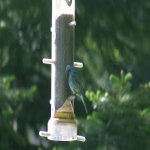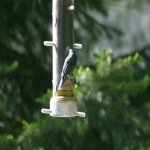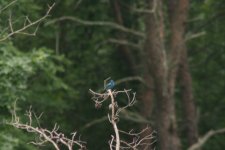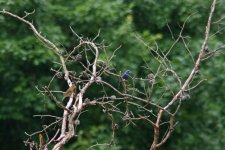Cubkin
Cubkin
This guy spent most of yesterday afternoon in my finch feeders, and I believe it to be a first-year blue grosbeak, but would like some confirmation from someone more familiar with them. We live somewhat north of their usual range and I've never seen one before. There was a female with him who seemed a good match for the female blue grosbeak in my Sibley's, but I didn't manage to get her picture.








